Rumors about North Korean MLRS for the Russian army
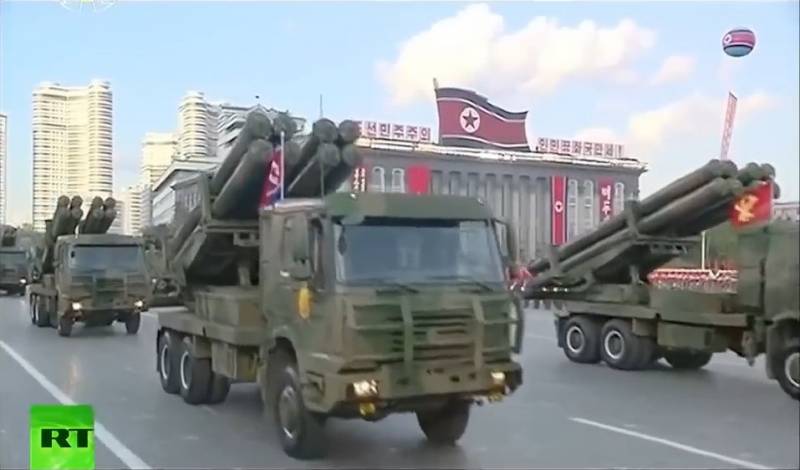
MLRS KN-09 of the first version at the parade in 2015.
Rumors have reappeared about the expansion of military-technical cooperation between Russia and the DPRK. This time it is reported that the Russian army, against the backdrop of ongoing hostilities, is showing interest in North Korean artillery, incl. to multiple launch rocket systems. By acquiring such weapons, Russia allegedly intends to increase the firepower of its ground forces and increase its advantages over the enemy.
There are rumors
The first rumors about Russian-Korean military-technical cooperation in the context of the Special Operation to Protect Donbass appeared last summer. Then a number of foreign media outlets, citing unnamed sources in intelligence and other structures, claimed that the Russian army had depleted its reserves of ammunition and weapons. As a result, it has to turn to the DPRK for shells and missiles. In addition, Russia can purchase Korean-made barrel and rocket artillery systems.
No confirmation of this information was provided, but this did not prevent it from being circulated in press publications and even included in statements by foreign officials. However, over time, the topic of North Korean weapons and ammunition faded into the background due to the absence of any real events that could be associated with the circulating rumors.
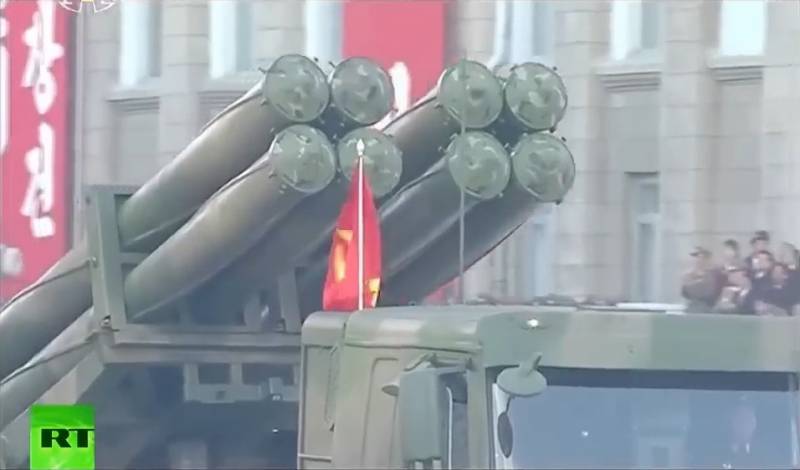
300mm missile guides
The foreign press returned to the topic of possible supplies of Korean weapons to Russia a few days ago - in connection with the official visit of the DPRK leader Kim Jong-un. It was assumed that the heads of state would not only discuss political and economic issues, but also agree on military-technical cooperation.
Without waiting for official information, foreign news agencies published “details” of closed negotiations, allegedly obtained by the British intelligence agency Mi-6. This data is already being studied by foreign experts, and has also been transferred to the Kyiv regime.
Citing sources in British intelligence, they write that the leaders of Russia and North Korea discussed the issue of supplying missile systems. North Korean-made ballistic missiles could reach Russia as early as October and should be expected in the combat zone over the next few weeks.
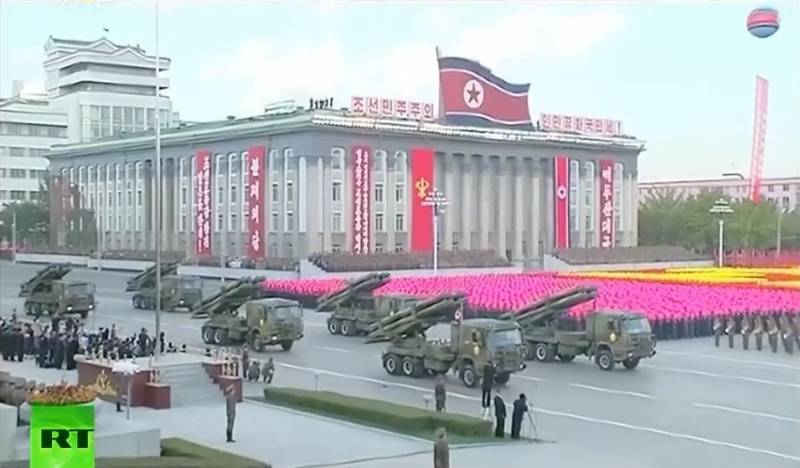
Additionally, Mi-6 claims that Russia will begin production of a Korean missile system known as the KN-09. For this purpose, it is allegedly planned to conclude a special agreement and build a production site. British intelligence officers and the foreign press cannot name the timing of the implementation of such plans and the appearance of serial KN-09 in the Russian army.
Long range system
In foreign publications, the Korean KN-09 MLRS is compared with the American M142 HIMARS. The latter is the most advanced Western-developed multiple launch rocket system. In addition, according to foreign news agenda, the M142 changed the course of hostilities in Ukraine and is helping the Kyiv regime “liberate the occupied territories.”
It is curious that the comparison of the tabular characteristics is far from being in favor of the American MLRS. According to known data, the KN-09 is capable of sending missiles to a distance of 180-200 km, and in this regard it is noticeably superior to HIMARS even with the latest generation of projectiles. The lag in performance of the American complex is considered a cause for serious concern.
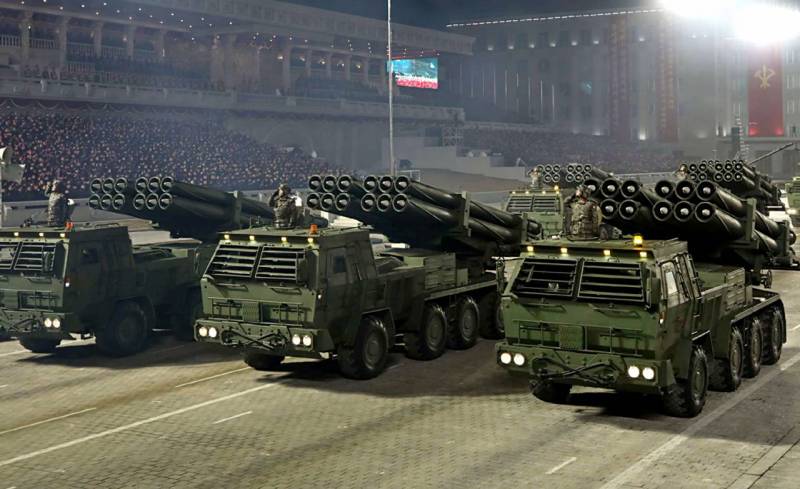
Upgraded version of KN-09 with 12 guides on a four-axle chassis, 2020.
It should be noted that the KN-09 MLRS developed by the DPRK is indeed of interest - at least technically. In conditions of isolation and known restrictions, the Korean industry was able to create an interesting and promising model with high performance. In addition, it is already known about its modernization aimed at increasing the basic parameters. It is assumed that Korean engineers had access to the Soviet / Russian Smerch system or to Chinese developments, but the use of foreign experience does not detract from their own merits.
According to known data, KN-09 was developed at the turn of the two thousandth and tenth years. No later than 2014, this MLRS entered service with the troops, and at the same time it was first noticed by American and South Korean troops. Subsequently, combat vehicles were repeatedly demonstrated at parades, and also participated in various exercises and shootings, incl. covered by the press. At the same time, foreign intelligence services tried to establish the characteristics and technical features of the complex as a whole and its individual components.
Technical features
The KN-09 is a self-propelled large-caliber MLRS of traditional appearance. All system units are mounted on a vehicle chassis, which provides high mobility and cross-country ability. The first modification of the complex was built on a three-axle truck, presumably of the Chinese brand HOWO. The modernized version, first shown in 2020, was built on a four-axle chassis reminiscent of the Soviet ZIL-135.
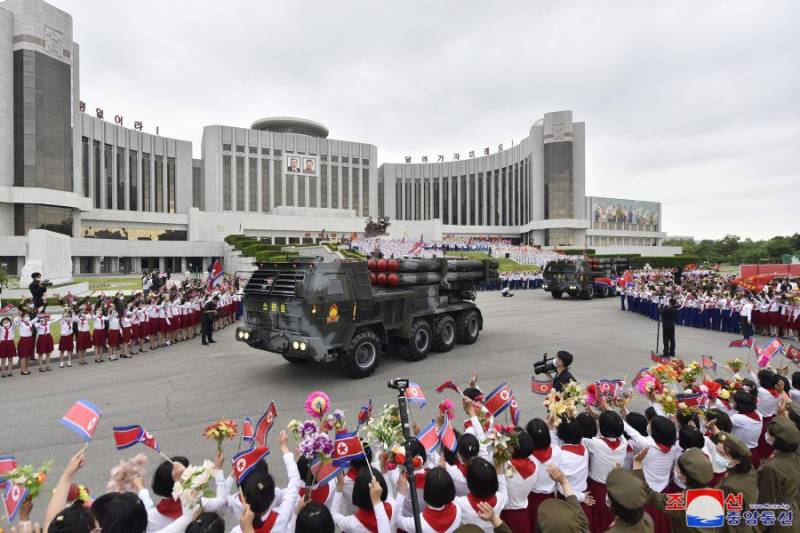
Handover ceremony for the Army KN-09 MLRS acquired by the Children's Union of Korea, June 2023.
In both cases, the vehicle cabin accommodates crew positions and fire control equipment. The modernized version of the combat vehicle is equipped with protective windshield shutters, which increase the safety of the crew. Behind the cabin, on the cargo area of the chassis, there are boxes with the necessary equipment, and in the stern there is a rotary support device for the launcher.
Apparently, the design of the launcher allows for azimuth guidance within a wide sector. It is also possible to lift the installation to large elevation angles.
The launcher contains guides for 300 mm rockets. Each such device is a pipe of the required diameter with a spiral guide for the initial spin-up of the missile. The first modification of the KN-09 carried eight guides with missiles - they were divided into two 2x2 blocks. MLRS arr. 2020, thanks to a more load-carrying chassis, carries 12 missiles with six guide tubes blocked.
The KN-09 uses rockets similar to the Smerch/Tornado-S missiles. They are made in a cylindrical body with a diameter of 300 mm and a length of approx. 7,5-8 m and can have a mass of up to 800-900 kg. The missiles are equipped with a high-performance solid fuel engine. With its help, a firing range of up to 180-200 km is ensured. According to foreign estimates, the missiles carry warheads of various types weighing up to 70-80 kg.
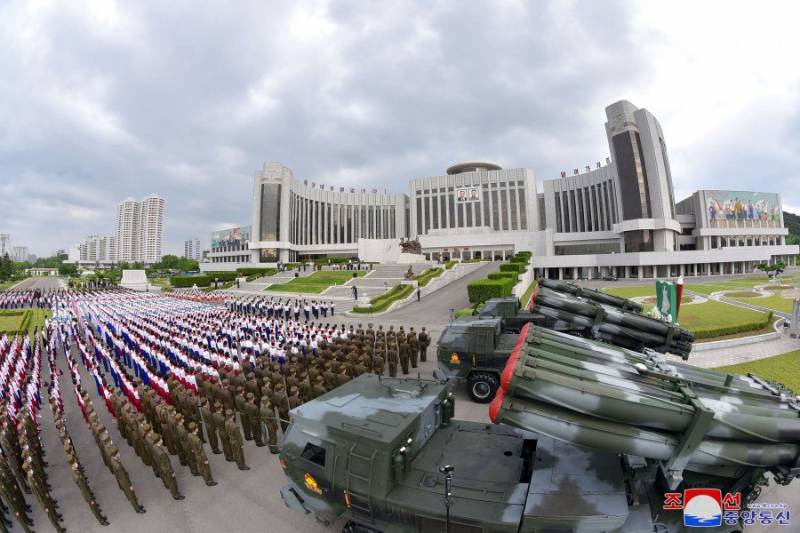
To ensure the required firing accuracy over the entire range of ranges, the KN-09 missile is equipped with control devices. According to various sources, trajectory correction is used based on signals from satellite navigation systems, probably GLONASS and Beidou. Control is carried out by small rudders in the bow of the projectile. At the end of the 300s, foreign intelligence services and the media reported the development of a certain 09-mm missile with an optical homing head. Perhaps this information was related specifically to the KN-XNUMX MLRS.
High potential
According to available data, the Korean KN-09 multiple launch rocket system with 300 mm rockets has high tactical and technical characteristics and should show high efficiency. In terms of key indicators and potential, it should not be inferior to the main foreign analogues.
As the foreign press rightly notes, the KN-09, with a firing range of up to 200 km and satellite guidance, is superior in combat qualities to the American HIMARS MLRS, incl. when it uses long-range ER GMLRS and GLSDB ammunition, which only fly 150 km. You should also remember the Chinese 301-mm A200 rocket and systems for it, such as the Belarusian Polonaise. An MLRS with these shells is capable of attacking targets at a distance of 200 km, and a modernized missile with an increased range has already been developed.
The caliber of the Korean MLRS KN-09 is similar to the Russian Smerch / Tornado-S. At the same time, our complex, unfortunately, lags behind its missile flight characteristics. The old 9M55 family of projectiles have a range of only 70 km, and modern ammunition has only recently surpassed the 100 km mark. At the same time, there is a fundamental possibility of reaching 200 km, and Russian enterprises are working on this.
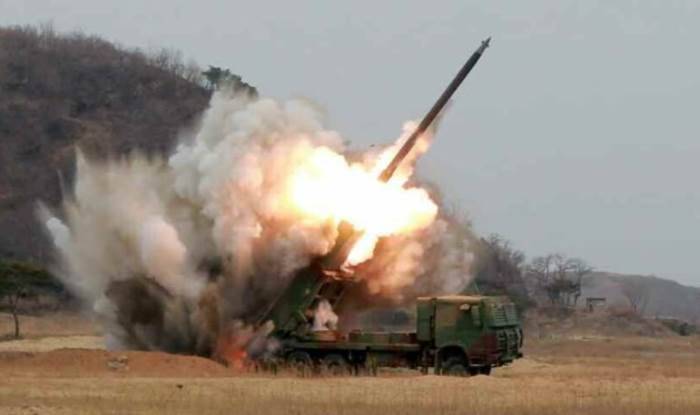
Launch of a 300 mm guided missile
The expected appearance of a missile with a range of up to 200 km will obviously affect the potential of the Tornado-S MLRS. It will retain all its functions, but at the same time will be able to attack objects at a greater depth of enemy defense. In addition, it will provide a great advantage over NATO systems, regardless of the ammunition they use.
Probably, it was the difference in the characteristics of the Russian “Smerch” / “Tornado-S” and the Korean KN-09 that became one of the main reasons for the emergence of rumors about the possible purchase of the latter. However, the matter does not go further than dubious publications and unconfirmed information.
With my own strength
Russian artillery, incl. jet, armed and equipped only with domestically developed and produced systems. The industry produces a wide range of various systems and products for the army, and also modernizes existing models and develops completely new ones. In such a system there is simply no need to purchase foreign MLRS and/or missiles.
At the same time, the foreign press and intelligence agencies insist that Russia is unable to cope with the Special Operation and needs urgent and extensive assistance from the “rogue country” represented by the DPRK. However, you can ignore this. “Sensations” of this kind already appeared a year ago, and have not received any confirmation in the intervening time. Therefore, there is no reason to believe that this time the real plans of Moscow and Pyongyang were found out abroad.
Information